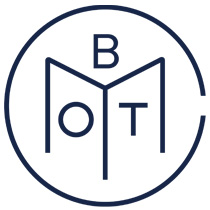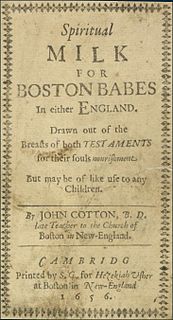
Western Publishing, also known as Western Printing and Lithographing Company, was a Racine, Wisconsin, firm responsible for publishing the Little Golden Books. Its Golden Books Family Entertainment division also produced children's books and family-related entertainment products. The company had editorial offices in New York City and Los Angeles, California. Western Publishing became Golden Books Family Entertainment in 1996. As of 2013, Little Golden Books remains as an imprint of Penguin Random House.

E. P. Dutton was an American book publishing company. It was founded as a book retailer in Boston, Massachusetts, in 1852 by Edward Payson Dutton. Since 1986, it has been an imprint of Penguin Group.

Dodd, Mead and Company was one of the pioneer publishing houses of the United States, based in New York City. Under several names, the firm operated from 1839 until 1990.

Book of the Month is a United States subscription-based e-commerce service that offers a selection of five to seven new hardcover books each month to its members. Books are selected and endorsed by a panel of judges, and members choose which book they would like to receive, similar to how the club originally operated when it began in 1926. Members can also discuss the books with fellow members in an online forum.
Avon Publications is one of the leading publishers of romance fiction. At Avon's initial stages, it was an American paperback book and comic book publisher. The shift in content occurred in the early 1970s with multiple Avon romance titles reaching and maintaining spots in bestseller lists, demonstrating the market and potential profits in romance publication. As of 2010, Avon is an imprint of HarperCollins.

Books+Publishing is a news outlet reporting on the Australian book industry. Published as a website with daily newsletters and a print magazine, the outlet produces industry news about publishing, bookselling, libraries, rights sales, literary awards and literary festivals, as well as author interviews and pre-publication reviews of Australian and New Zealand books.
R. R. Bowker LLC is an American limited liability company domiciled under Delaware Limited Liability Company Law and based in New Providence, New Jersey. Among other things, Bowker provides bibliographic information on published works to the book trade, including publishers, booksellers, libraries, and individuals; its roots in the industry trace back to 1868. Bowker is the exclusive U.S. agent for issuing International Standard Book Numbers (ISBNs), a universal method of identifying books in print. Bowker is the publisher of Books in Print and other compilations of information about books and periodical titles. It provides supply chain services and analytical tools to the book publishing industry. Bowker is headquartered in New Providence, New Jersey, with additional operational offices in England and Australia. It is now owned by Cambridge Information Group.
John Ratcliff of the seventeenth century is the first identifiable bookbinder in America, known for binding Eliot's Indian Bible in 1663. Ratcliff, who came from London, England, worked as a bookbinder in Boston, Massachusetts, for about twenty years, from approximately 1662 to 1682.
A book sales club is a subscription-based method of selling and purchasing books. It is more often called simply a book club, a term that is also used to describe a book discussion club, which can cause confusion.
Reading the Romance is a book by Janice Radway that analyzes the Romance novel genre using reader-response criticism, first published in 1984 and reprinted in 1991. The 1984 edition of the book is composed of an introduction, six chapters, and a conclusion, structured partly around Radway's investigation of romance readers in Smithton and partly around Radway's own criticism. Radway herself expresses preference for reader-response criticism throughout the course of the book, as opposed to the popular new criticism during the 1980s.
Harry Scherman was an American publisher and economist, most notable as the co-founder of the Book of the Month Club. He also wrote four books on economics.

James Danky is an American historian, bibliographer, and culture critic. He is currently a faculty associate at the University of Wisconsin-Madison School of Journalism and Mass Communication. Danky is best known as an advocate for collecting alternative and small-press publications during his tenure at the Wisconsin Historical Society.

Your Dream Home: How to Build It for Less Than $3,500 is a 1950 "do it yourself" book by American columnist and editor Hubbard Cobb. It was the biggest non-fiction seller of the year of its release, selling over a million copies. Specifically, the book featured instructions for building a Cape Cod style home, with eight floor plans included. The book is illustrated and covers all aspects of construction relevant to 1950, from financing the project and clearing the land to constructing built-in furniture for the finished product. It was the debut book for Cobb, who would go on to produce a number of others in the "do it yourself" genre.
A History of the Book in America is a five-volume series of scholarly books of essays published 2000–2010 by the University of North Carolina Press, and edited by David D. Hall. Topics include printing, publishing, book selling, reading, and other aspects of print culture in colonial America and the United States. Among the contributing writers: Hugh Amory, Georgia B. Barnhill, Paul S. Boyer, Richard D. Brown, Scott E. Casper, Charles E. Clark, James P. Danky, Ann Fabian, James N. Green, Robert A. Gross, Jeffrey D. Groves, David D. Hall, Mary Kelley, E. Jennifer Monaghan, Janice Radway, James Raven, Elizabeth Carroll Reilly, Joan Shelley Rubin, Michael Schudson, David S. Shields, Wayne A. Wiegand, Michael Winship.

The Nordfriedhof is a public cemetery run by the city of Leipzig, located at Berliner Straße 125–127 in the district of Eutritzsch between Hamburger Straße, Theresienstraße and Maximilianallee, directly adjoining the smaller Old Jewish Burial Ground.
Hezekiah Usher of Boston was the first known bookseller in British America. The first books printed in the thirteen colonies were published and sold by Usher.

Spiritual Milk for Boston Babes is a children's catechism by the minister John Cotton. The 1656 catechism is the first known children's book published in America.
As of 2018, several firms in the United States rank among the world's biggest publishers of books in terms of revenue: Cengage Learning, HarperCollins, Houghton Mifflin Harcourt, McGraw-Hill Education, Scholastic, Simon & Schuster, and Wiley.

Andrew Barclay (1737–1823) was a Scottish bookbinder who emigrated from Kinross, Fifeshire, to Boston in the British-American colonies in the mid-eighteenth century. As the American Revolutionary War drew near, Barclay sided with the Loyalists and was compelled to leave Boston when the British were driven out in March 1776. Upon leaving Boston he was assigned a command in charge of getting Loyalist refugees out of Boston to Nova Scotia. Soon after, he continued his trade in British-occupied New York for the duration of the war. Bookbinder's trade labels like Barclay's, found on the inside cover of some of his works, are considered a rarity among books printed in colonial America.
John William Tebbel (1912–2004) was an American journalist, editor, writer, teacher, and media historian. He was known for his four volume book, A History of Book Publishing in the United States (Bowker).










